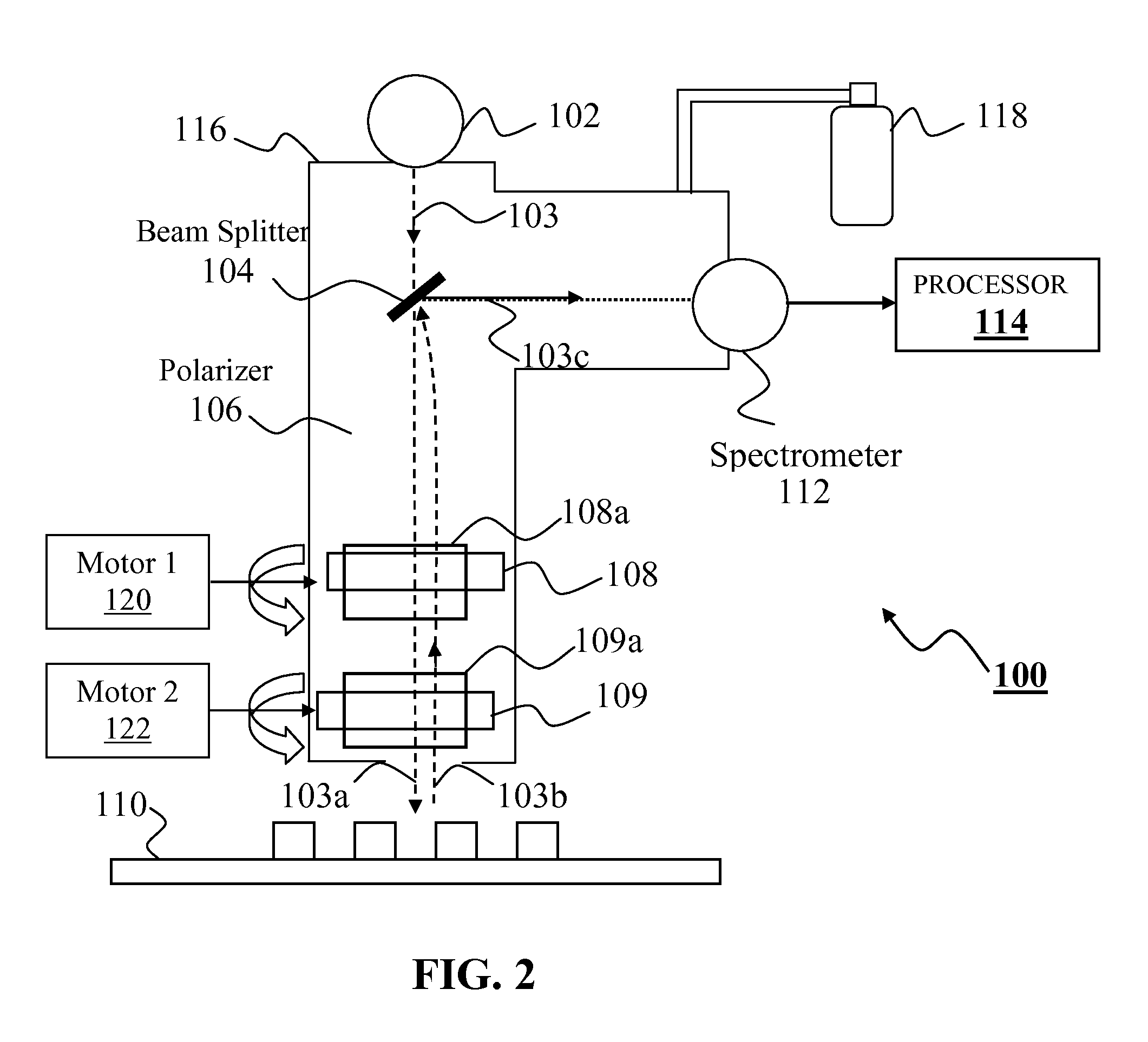Normal incidence ellipsometer with complementary waveplate rotating compensators
a technology of rotating compensators and ellipsometers, which is applied in the direction of optical radiation measurement, instruments, measurement devices, etc., can solve the problems of reducing the sensitivity of the rce operation, the difficulty of rce operation, and the inability to meet the requirements of broadband operation, so as to improve the sensitivity, increase the diagnostic power, and facilitate construction
- Summary
- Abstract
- Description
- Claims
- Application Information
AI Technical Summary
Benefits of technology
Problems solved by technology
Method used
Image
Examples
Embodiment Construction
[0020]Although the following detailed description contains many specific details for the purposes of illustration, anyone of ordinary skill in the art will appreciate that many variations and alterations to the following details are within the scope of the invention. Accordingly, the embodiments of the invention described below are set forth without any loss of generality to, and without imposing limitations upon, the claimed invention.
[0021]In embodiments of the present invention a second, different waveplate is introduced into a rotating compensator normal incidence ellipsometer. The second waveplate provides a quarter wavelength retardation that is different from and complementary to that of the first waveplate in order to increase the spectral range for which useful retardation is available, especially towards the deep UV portion of the electromagnetic spectrum. The sensitivity for the system may also be increased in the conventional spectral range, since each of the two wavepla...
PUM
 Login to View More
Login to View More Abstract
Description
Claims
Application Information
 Login to View More
Login to View More - R&D
- Intellectual Property
- Life Sciences
- Materials
- Tech Scout
- Unparalleled Data Quality
- Higher Quality Content
- 60% Fewer Hallucinations
Browse by: Latest US Patents, China's latest patents, Technical Efficacy Thesaurus, Application Domain, Technology Topic, Popular Technical Reports.
© 2025 PatSnap. All rights reserved.Legal|Privacy policy|Modern Slavery Act Transparency Statement|Sitemap|About US| Contact US: help@patsnap.com



